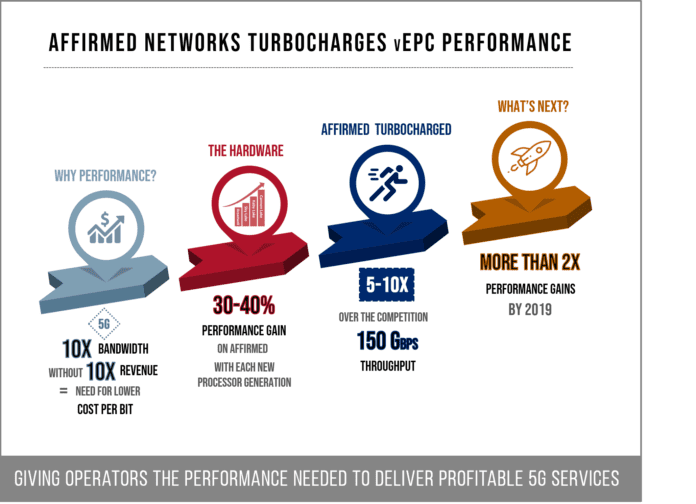Affirmed Networks benchmarks vEPC performance
Network virtualization is most certainly a process, but one that’s imperative to the evolution from hardware-driven connectivity to much more flexible software control. While operators approach softwarization differently, many see deployment of a virtual evolved packet core (vEPC) as a key driver of network efficiency and service elasticity.
Affirmed Networks counts more than 80 global deployments of its vEPC and, in tandem with 5G World last week in London, provided an update on performance benchmarking. Using a single server kitted with an Intel Xeon Scalable processor, the vendor pushed throughput of 150 Gbps.
Affirmed’s VP of Marketing Angela Whitford provided some color in a conversation with RCR Wireless News. “The whole reason we went into a benchmarking exercise,” she said, “is because there’s a lot of questions out there.” She highlighted the key role of using generic hardware in deploying 5G; basically the goal is to deliver a 10x increase in bandwidth, however that doesn’t equate to a 10x gain in revenue.
Company Chairman and CEO Hassan Ahmed described Affirmed’s focus as “to provide operators with a flexible architecture capable of reducing costs and driving new revenue streams…This is critical to ensuring our customers will have the best platform to capitalize on the delivery of the new applications and services in the years to come.”
As processor technology continues to evolve in subsequent generations, Affirmed predicts 30% to 40% performance gains.
Another key aspect of 5G that Affirmed has been an early mover on relates to network slicing wherein a single physical network can be partitioned into multiple virtual networks allowing the operator to offer optimal support for different types of services for different types of customer segments. The key benefit of network slicing technology is it enables operators to provide networks on an as-a-service basis, which enhances operational efficiency while reducing time-to-market for new services.
To deliver on this, virtualization is an imperative. On the business side, network slicing lets an operator spin-up a data pipe that’s optimized for whatever service requirements a particular application needs. Spectrum and network resources are optimally allocated—exactly what’s need is what’s made available, no more, no less. This has a straight line to cutting opex while creating new service-based revenues.

